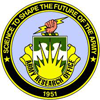OSA Incubator Meeting Implications of Compressive Sensing Concepts to Imaging Systems
Events
OSA Incubator Meeting
|
|
9-11 April 2014 HOSTED BY:
Ravi Athale, Office of Naval Research; Abhijit Mahalanobis, Lockheed Martin
Joe Mait, Army Research Laboratory; Mark Neifeld, University of Arizona |
READ THE INCUBATOR BLOG
Topic Overview
Compressive Sensing (CS) has emerged as field of study that has the potential to revolutionize the sensor industry, with applications that span across commercial, defense, security and medical domains. While the mathematics is well understood, in recent years there has been a surge of interest in harnessing the potential of CS to design real-world systems that provide significant benefits in reducing hardware cost/complexity, improve the data processing efficiency, and enabling new sensing capabilities that cannot be achieved using conventional techniques.Featured Topics
The purpose of the Incubator was to ask hard questions and seek honest answers about what is "real" in CS. There are many claims about the potential impact of CS on sensing and imaging technologies, but the perception is that evidence is lacking to support it. Hence, the questions on the table were:
- Are there any concrete applications where CS has offered a quantifiable advantage over other State of the Art techniques?
- What are the underlying factors that lead to these advantages? Are these factors transferable to other important applications?
- When there is a clear benefit, what are the challenges that are holding it back from implementation?
- What technology advances are required to make it a compelling technique to help meet current and future needs?
While CS is a field of study of considerable academic interest, the purpose of the Incubator is a deep dive to see if a convincing argument exists for the current usefulness of CS. Towards this end, the meeting was organized as follows (a detailed agenda is below).
Challenge problems were defined ahead of time that enabled participants to be ready to discuss selected topics at the meeting. We anticipated about six expository talks, about 40 minutes each, that present the state of the art in an objective manner. The purpose of the talks was to ensure that we start with a common understanding of CS terminology, and its applications. The discussions were also enriched by including perspective from outside optical imaging community (describing success stories and otherwise).
There were also two break-out sessions (90 minutes each) with three parallel groups working on challenge topics. These group discussions included a mixture of different communities and perspectives (theoreticians, algorithms researchers, hardware experts, applications, and missions). The findings of the break-out sessions/group discussions were presented to all attendees. The chairs consolidated the thoughts/discussions/conclusions generated at the meeting, and developed an outline of the formal report that was made available to the technical community.
Sponsors
Meeting Schedule
Click here to view the full Agenda


